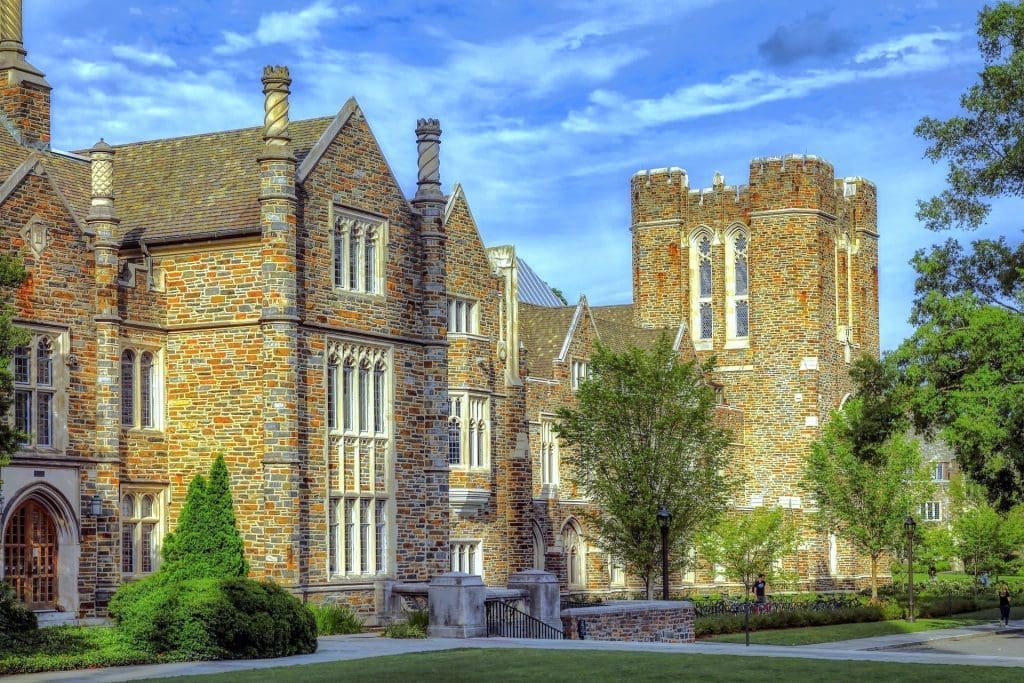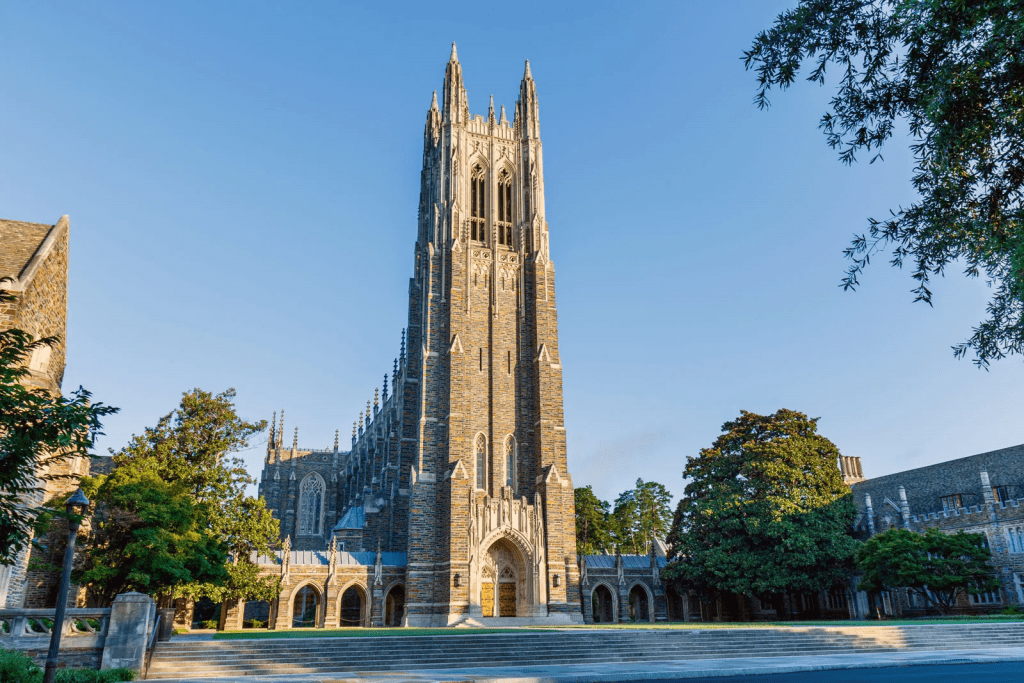As one of the country’s most revered private research universities, Duke University attracts a sizable—and global—applicant pool. In the latest admissions cycle for the class of 2028, Duke again demonstrated its desirability and competitiveness, accepting only 5.1% of applicants. Of the roughly 54,191 students who applied to Duke this year, only 2,790 received acceptance letters. This represents a nearly 1% drop in the Duke acceptance rate from 2023 to 2024, cementing Duke’s reputation as one of the most difficult universities to gain entrance to in the nation.
Duke’s Admission Insights for 2024
For Fall 2024, Duke released detailed admission statistics, including comparisons between Early and Regular Decision applicants. The University announced that it received 54,191 applicants for the Class of 2028, a 9.5% increase from last year’s 49,469. The fact that the acceptance rate decreased while applicants increased made 2024 one of Duke’s most competitive years in recent history.

Duke Class of 2028
Total Applicants: 53,191
Admitted Students: 2,790
Acceptance Rate: 5.1%
With an overall acceptance rate of 5.1%, Duke remains one of the most competitive universities in the country. It’s important to note that Duke offers both Early and Regular Decision application cycles, and that the data show Early Decision applicants enjoy a higher acceptance rate of 12.9%, while Regular Decision applicants see an acceptance rate of 4.1%.
Duke’s Acceptance Trends and Detailed Insights
The Duke acceptance rate has seen a yo-yo trend in recent admissions years, with the Class of 2026 showing a lower acceptance rate (4.6%) and the Class of 2027 a higher one (6.3%). There have also been changes in the Early and Regular Decision acceptance rates, however it still remains that Early Decision applicants have a higher chance of receiving admission than those in the Regular Decision cycle.
State vs. Out-of-State Acceptance Dynamics
While more students from North and South Carolina applied for the Class of 2028 than in recent years (likely due to an increase in state financial aid packages), there is still significant room for out-of-state applicants to gain admission, with most of these applicants coming not surprisingly from the populous states of California, New York, Texas, and Florida. Students from less-populated states enjoy a higher out-of-state acceptance rate than their peers from larger states.

Academic Profiles and Admissions Policies
When faced with a competitive acceptance rate, Duke applicants must demonstrate strong academic performance to gain admission. The middle 50% of SAT scores for recent classes is 1520-1570 and the middle 50% of ACT scores is 34 to 35.
Admissions Trends & Noteworthy Statistics
While higher than the Regular Decision Duke acceptance rate of 4.1%, the 12.9% acceptance rate for Early Decision applicants was Duke’s lowest in history. Just last year, the Early Decision acceptance rate was 16.5%, for example.

Geographic and Demographic Breakdown
North Carolina sends more students to Duke than any other state. The 2024 admissions cycle is the first one since the Supreme Court has ruled race-based admissions criteria to be unconstitutional. Duke has not yet released statistics on the race or ethnicity of accepted students for the Class of 2028.
Duke’s National and International Appeal
International students make up roughly 10% of Duke’s undergraduate student body. The top five countries represented in Duke’s international student body are China, India, South Korea, the United Kingdom, and Canada.

Strategizing for Duke Admissions
Empowerly recognizes the complexities and competitive nature of gaining admission to Duke. Our tailored guidance and strategic planning can demystify the process, enhancing your application’s strength and aligning your achievements with Duke’s unique admissions criteria.
Exploring Duke’s Prestigious Legacy and Rigorous Admissions
Founded by Methodists and Quakers in 1838, Duke is a private research university with a global reputation for both academic and athletic excellence. Just under 7,000 undergraduate students attend Duke, which also has a robust postgraduate program. Among its prestigious schools are those of law, medicine, the environment, and engineering, offering students a range of academic possibilities.

Navigating the Application Journey at Duke
In addition to its academic and athletic prowess, Duke is known for its 100% need-met guarantee approach to financial aid. These combined advantages to Duke make for a competitive and dynamic admissions landscape, and highlight the importance of submitting a standout application. With deadlines in November and January, applicants must demonstrate a strong civic perspective in addition to impressive academic performance to find themselves at the top of the 50,000 student applicant pool.
Decoding Duke’s Admissions Criteria for Prospective Students
Duke places a large emphasis on community service and civic-mindedness. As a result, it seeks these qualities in prospective applicants, who should demonstrate these qualities as part of their complete Duke application. Letters of recommendation and extracurricular activities are two areas where applicants can show they meet these high standards of personal conduct and engagement to the admissions committee. In the absence of a requirement for standardized test scores, students can take advantage of the supplemental essays and letters of recommendation to boost their application package and highlight additional achievements and personal qualities relevant to Duke’s admissions criteria.
